Got a food marketing gimmick?

Food marketing in 2021: Replace added sugar with fruit powders or risky sweeteners; add protein, vitamins, or “superfoods”; slap on “immunity” or “hydration” or “keto” claims; steer shoppers away from real, unprocessed foods like fresh fruits and vegetables (they could cut into your sales).
One thing companies didn’t bank on: You’ll see right through those gimmicks.
Perfect marketing?
“15 g protein. 20+ superfoods,” says the Dark Chocolate Chip Peanut Butter Perfect Bar.
Maybe that’s why the fudgy chilled bars are suddenly everywhere—from Starbucks to your supermarket’s refrigerator case—and are spawning copycats galore from other bar brands.
The main ingredients: peanut butter and nonfat dry milk (not bad) and honey (not perfect).
They help explain why each 2.3 oz. bar packs 330 calories (hefty for a snack) and 12 grams (3 teaspoons) of added sugar. To its credit, Perfect is rolling out two smaller “snack size” bars.
What counts as a “superfood”? The company gets to decide. But whatever it is, don’t expect much. The Dark Chocolate Chip Peanut Butter Bar, for example, has more sea salt than its blend of “dried whole food powders” like orange, apple, and carrot.
It’s a “bar so fresh it belongs in the fridge,” says the website. Hmm. That’s also where you’d keep real superfoods. You know, things like fresh oranges, apples, and carrots.
Sugar bowl
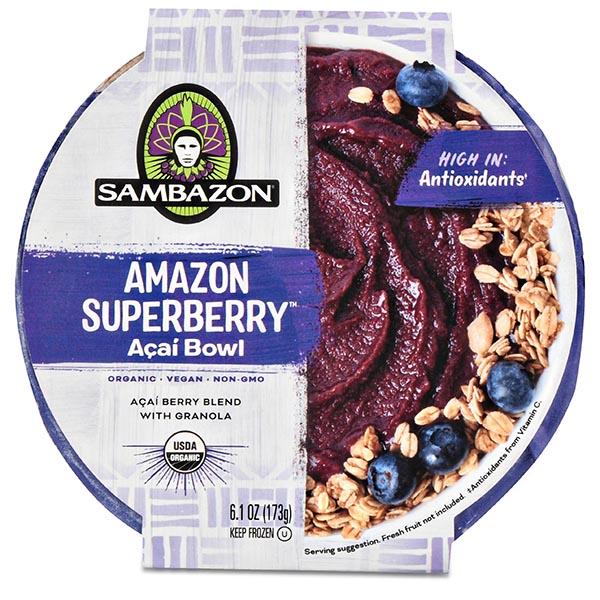
What is it about açaí?
The presence of the exotic berry makes it easy to overlook the sugary smoothie base and sugary granola toppings that often show up in “açaí bowls.”
A (230-calorie) frozen Sambazon Organic Amazon Superberry Açaí Bowl, for example, gets its 16 grams (4 teaspoons) of added sugar from tapioca syrup and cane syrup (in the smoothie) and brown sugar (in the granola topping). That’s a third of a day’s limit.
A KIND Frozen Almond + Triple Berry Açaí Smoothie Bowl (350 calories) has only 8 grams of added sugar. But each yogurt-sized plastic bowl delivers another 13 grams of sugar from a processed “fruit blend” of juices from concentrate plus “fruit purée concentrate.” Not exactly the real fruit smoothie you’d whip up at home.
At smoothie shops, all bets are off.
Jamba’s Açaí Primo Bowl (510 calories) has some berries and bananas, but there’s also the “açaí blend” (sweetened with white grape juice concentrate), sweetened soymilk, granola (with “evaporated cane juice”), and honey.
Sheesh.
Zero sense
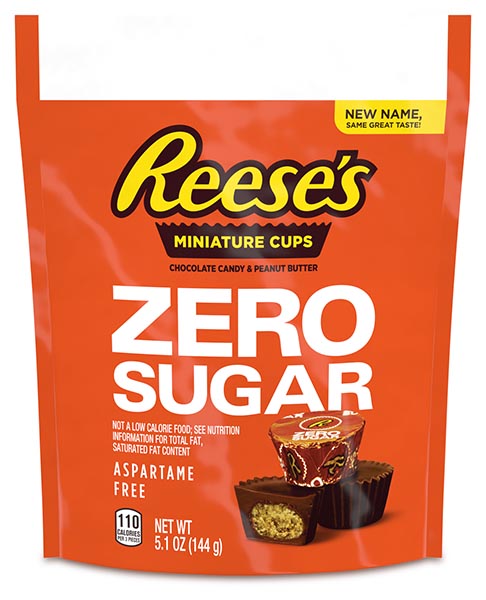
“ASPARTAME FREE,” say Zero Sugar Reese’s Miniature Cups.
Reese’s skipped one risky sweetener...but added another. That’s sucralose, which we rate as “avoid” (see chemicalcuisine.org).
Then there are the fake fibers (like polydextrose) and the sugar alcohols (12 grams per 3-piece serving). No wonder the label warns that “excess consumption may lead to gas and bloating.”
All told, a serving of Zeros has nearly as many empty calories (110) as the company’s sugary mini cups (130).
Want chocolate with real food? Try Skinny Dipped Almonds. The Super Dark + Sea Salt has just 3 grams of added sugar in a 130-calorie serving (16 almonds) and no fake sweeteners.
I need a gimmick
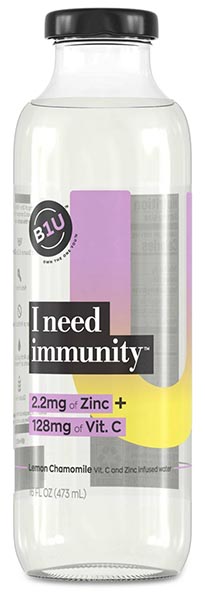
“I need immunity,” says B1U Lemon Chamomile fortified water.
Each bottle has 140 percent of a day’s vitamin C (the amount in two oranges) plus 20 percent of a day’s zinc.
“2 oranges = 130 cals or this bottle = 0 cals,” adds the side label. B1U’s point: water pumped up with vitamin C and zinc beats 2 oranges.
Yes, it would take 2 oranges (or 1 red bell pepper or 1¼ cups of cooked broccoli) to get that much vitamin C. But the fruit or veg also packs a wallop of potassium, folate, fiber, etc.
Need immunity? Real food—not extra zinc and vitamin C—is the key.
A 16 oz. B1U runs $2 or more. That’s one heckuva profit for owner Ocean Spray.
Sweetened with fruit...powder
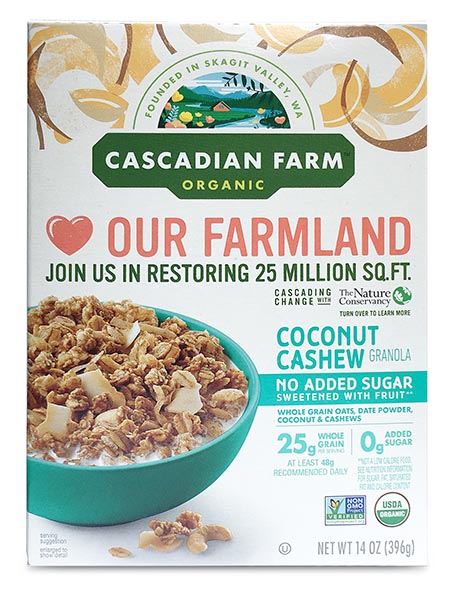
“No added sugar,” says Cascadian Farm Organic Coconut Cashew Granola. “Sweetened with fruit.”
Make that fruit powder.
Most of the cereal’s sugar (7 grams per 2/3 cup) comes from dried date powder.
Health authorities tell us to eat less added sugar and more fruit. Fruit powder? Not what they have in mind.
Whole fruit is low in calorie density (calories per bite) and full of intact plant cells that you chew (so you feel full). Dried fruit powder misses out on both.
Why not toss some fresh or frozen fruit into your bowl of shredded wheat or oatmeal? No added sugar...and no added powder. Win-win.
A protein price
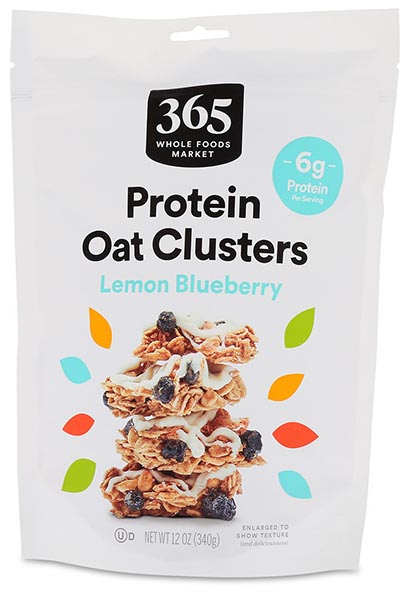
When snacks sprinkle on (a little) extra protein, that health halo often comes at a cost.
Take “protein-packed” Whole Foods 365 Lemon Blueberry Protein Oat Clusters. Despite the egg whites and pea and milk protein isolates, each 160-calorie serving delivers just 6 grams of protein...along with 7 grams of added sugar.
Why not spend those calories on an ounce of pistachios (6 grams of plant-based protein) or peanuts (7 grams) or pumpkin seeds (8 grams)? All come with a shot of healthy fats...and no added sugar.
Fire that Hydrant
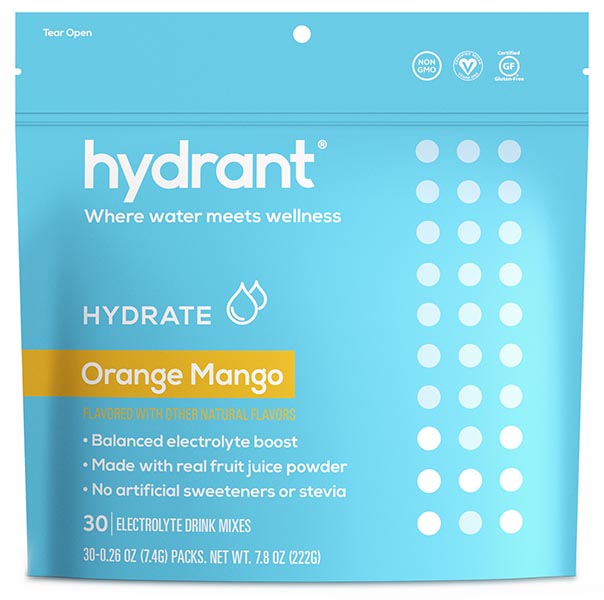
“Anchor your routine in hydration,” says Hydrant’s website, which suggests quaffing its electrolyte drink mix to “start your day with a boost” at 6 a.m., “keep your hydration levels up” after a workout, breakfast, or meditation at 9 a.m., “stay alert and focused” at 2 p.m., and “drift off with ease” at 9 p.m.
But unless you’re exercising intensely for more than an hour, plain water is fine. (And if you do exercise enough to need to replace electrolytes—like sodium or potassium—that are lost when you sweat, plain water plus food should do the trick.)
That makes a four-a-day Hydrant Hydrate habit a needless source of calories (80 to 100), added sugar (3 to 4 teaspoons), and sodium (1,040 milligrams).
What about No Added Sugar Hydrant Hydrate? It’s just a (salty) waste of $1 per serving.
Dumpin’ Hines
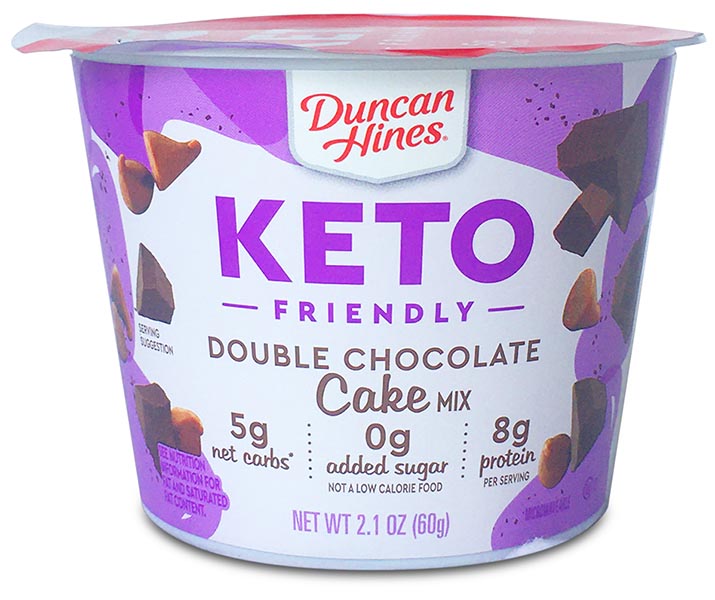
Duncan Hines Keto Friendly cups “are single-serve, easy-to-prepare sweet treats made specifically for those seeking keto-friendly snacks,” says the company’s website.
But not for those seeking honest labeling.
Take the Double Chocolate Cake Mix. It has 300 calories, according to its label. But that doesn’t include the 2 tablespoons of melted butter or oil you’re supposed to mix in before microwaving. The label’s only clue: “Scan QR Code or visit www.duncanhines.com for as prepared nutrition information.” Gee, thanks.
“As prepared,” you’re looking at 500 calories. And with butter (not oil), the saturated fat hits a day’s max (20 grams). Some “snack” for one.
Food companies are always cooking up cakes, cookies, and other junk dressed up with diet buzzwords (low-carb, high-protein, you name it). Keto is just the latest.
Photos (top to bottom): Perfect Bar, Sambazon, Reese's, B1U, Kaamilah Mitchell/CSPI, Whole Foods, Hydrant, Kaamilah Mitchell/CSPI.
The information in this post first appeared in the July/August 2021 issue of Nutrition Action Healthletter.

